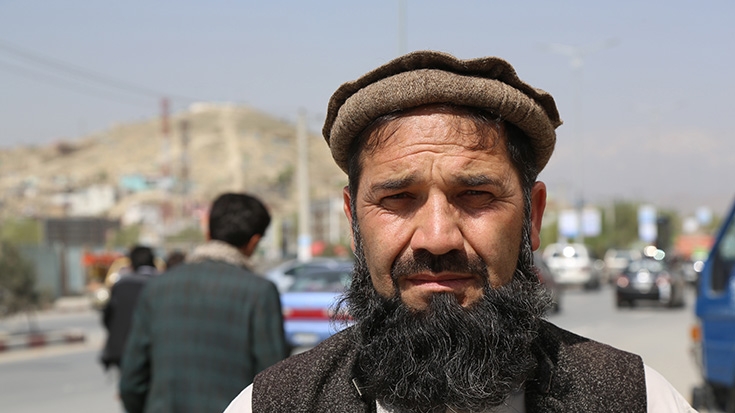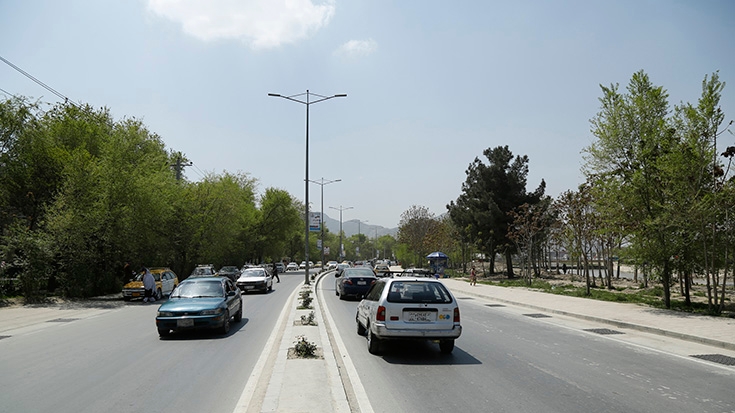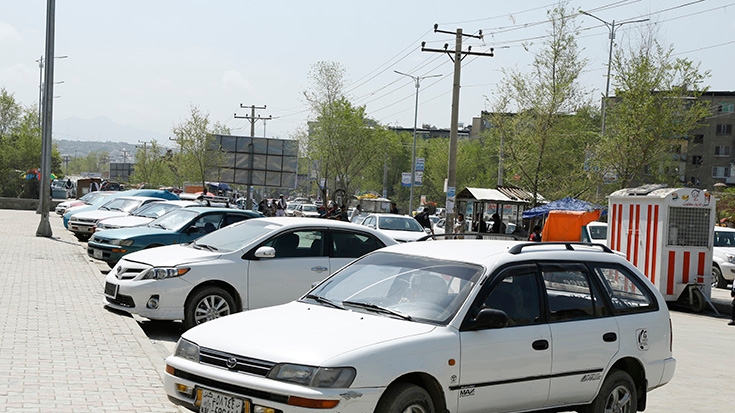Recently, however, the reconstruction of two roads, lined with well-planned parking lots, has helped ease the flow of traffic. Kabul Municipality constructed the roads and parking lots under the Kabul Urban Transport Efficiency Improvement Project (KUTEI), supported by the Afghanistan Reconstruction Trust Fund (ARTF). The ARTF’s $90.5 million grant to KUTEI targets improvement of transport services through a package of interrelated interventions to build Kabul Municipality’s capacity.
Built to international standards
The best international practice of reconstruction of a badly deteriorated road network is not only focused on quickly rehabilitating pavement conditions but also on provision of comprehensive transport services alongside roads, e.g. parking lots for access of road side services and drainage systems, which have to be built simultaneously.
The improvement of the 2.5-kilometer long Macrorayan IV and Kabul Nandare roads were completed on December 2014. The road crosses the three neighborhoods of First, Third and Fourth Macrorayan. It is lined with nine parking lots, each providing free parking for up to 100 cars.
“These roads were constructed according to international standards,” says engineer Taj Mohammad, director of the Afghan Builders Consortium, which was granted a contract to rehabilitate part of Macrorayan IV Road. “The roads are lined with a lighting system, lanes are separated by a median, and the roads also have four-meter sidewalks on both sides, running above standard drains.”
Mohammad Naeem, 49, a resident of the Fourth Macroyan district, praises the better road conditions. “Previously, the dust, dirt, and pollution on the old road were tormenting everyone,” he says. “Now, you can see how much it has changed. The parking lots too have helped ease traffic flow.” Naeem also mentions that the streetlights that line the road have made the area feel safer at night.
However, some local residents are still unaware of the new facilities. Sayed Anwar, who runs a small grocery store along the road, says that drivers would use the parking lots, if only they knew about them.
“But it hasn’t been that long since the roads were completed,” he points out. “Once people learn of the parking lots, and that they are free, drivers will park their cars here, and this will reduce traffic jams in the city.”



